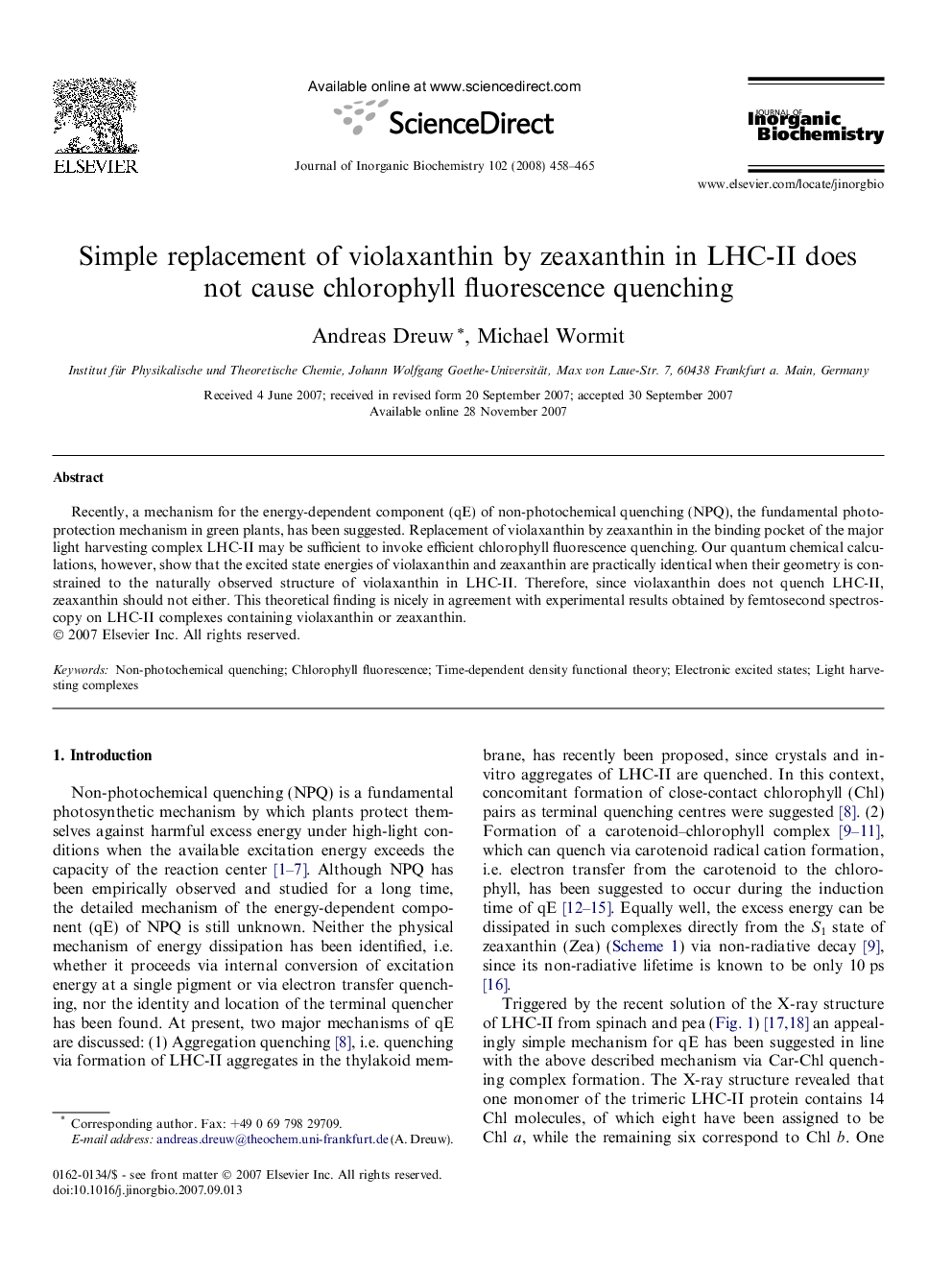| Article ID | Journal | Published Year | Pages | File Type |
|---|---|---|---|---|
| 1316673 | Journal of Inorganic Biochemistry | 2008 | 8 Pages |
Recently, a mechanism for the energy-dependent component (qE) of non-photochemical quenching (NPQ), the fundamental photo-protection mechanism in green plants, has been suggested. Replacement of violaxanthin by zeaxanthin in the binding pocket of the major light harvesting complex LHC-II may be sufficient to invoke efficient chlorophyll fluorescence quenching. Our quantum chemical calculations, however, show that the excited state energies of violaxanthin and zeaxanthin are practically identical when their geometry is constrained to the naturally observed structure of violaxanthin in LHC-II. Therefore, since violaxanthin does not quench LHC-II, zeaxanthin should not either. This theoretical finding is nicely in agreement with experimental results obtained by femtosecond spectroscopy on LHC-II complexes containing violaxanthin or zeaxanthin.
